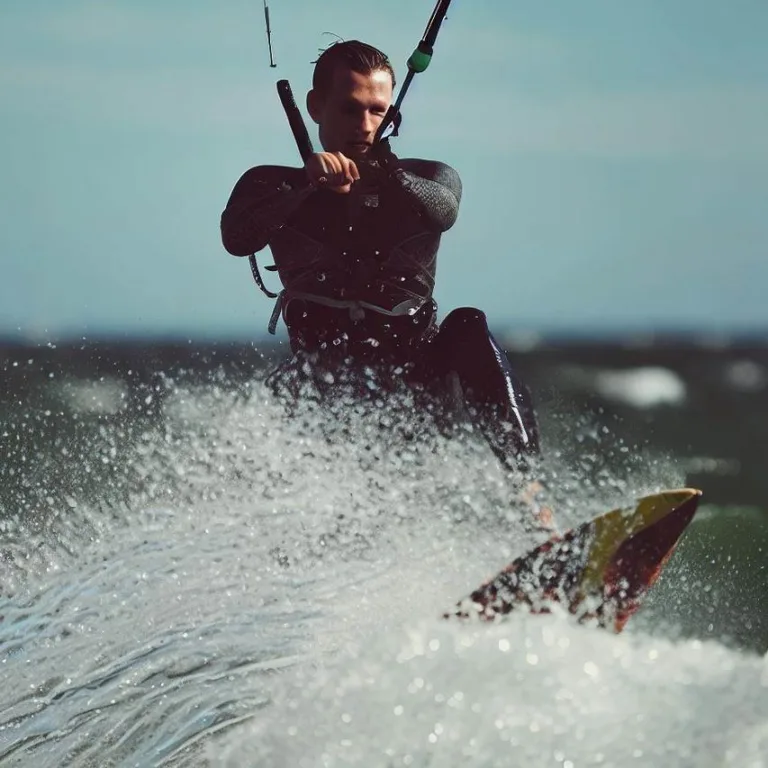Welcome to the thrilling world of kitesurfing, where the wind becomes your ally and the waves your playground. In this article, we’ll dive deep into the exhilarating sport of kitesurfing, exploring its history, equipment, techniques, and safety measures. Whether you’re a beginner looking to take your first steps on the board or an experienced rider seeking to enhance your skills, we’ve got you covered.
The origins of kitesurfing
Kitesurfing, also known as kiteboarding, emerged in the late 20th century as a fusion of elements from various water and wind sports. The concept involves harnessing the power of the wind with a kite and riding a board on water. The sport’s roots can be traced back to the inventive minds of water sports enthusiasts who sought to combine the excitement of windsurfing with the freedom of paragliding.
Gearing up: essential equipment
To embark on your kitesurfing journey, you’ll need the right equipment. Here are the key components:
- Kite: The heart of kitesurfing is the kite itself. These come in various shapes and sizes, from inflatable to foil kites, each designed for specific conditions and riding styles.
- Board: Kitesurfing boards are specially crafted for stability and maneuverability on water. They come in different designs, such as twin-tip and directional boards, catering to different riding preferences.
- Control Bar: The control bar connects you to the kite and allows you to manipulate its power and direction. It’s equipped with lines and a safety system for precise control.
- Harness: A harness helps distribute the kite’s pull across your body, reducing fatigue during long rides.
- Wetsuit: Depending on your location and water temperature, a wetsuit or drysuit is essential to keep you comfortable and protected from the elements.
Mastering the art of kitesurfing
Kitesurfing is a sport that requires skill, practice, and patience. Here are some fundamental techniques to get you started:
- Launching and Landing: Learn how to safely launch and land your kite to avoid accidents and injuries.
- Body Drag: Practice dragging your body through the water while holding onto the kite’s control bar. This skill helps you recover your board if you lose it.
- Waterstart: Once you’ve mastered body dragging, it’s time to learn how to get back on your board and start riding.
- Basic Turns: Work on your ability to make smooth turns on the water, both upwind and downwind.
- Jumping: For the more adventurous, jumping is an exciting aspect of kitesurfing. Mastering this skill adds a new level of thrill to your rides.
Staying safe on the water
While kitesurfing is undeniably exhilarating, safety should always be a top priority. Here are some safety tips to keep in mind:
- Take Lessons: If you’re new to kitesurfing, invest in professional lessons to learn the ropes from experienced instructors.
- Check Weather Conditions: Always check wind and weather conditions before heading out. Avoid strong winds and storms.
- Use Safety Gear: Wear a helmet, impact vest, and a safety leash to protect yourself in case of accidents.
- Respect Local Regulations: Familiarize yourself with local kitesurfing regulations and follow them to ensure everyone’s safety.
- Stay Connected: Kitesurf with a buddy, or at least inform someone of your plans and estimated return time.
What’s the best kite size for a beginner?
The ideal kite size for beginners depends on your weight and local wind conditions. It’s best to consult with a kiteboarding instructor who can recommend the most suitable size for you.
Is kitesurfing physically demanding?
Kitesurfing can be physically demanding, especially when you’re learning. However, with practice, you’ll build strength and endurance, and the experience becomes more enjoyable.
How long does it take to become proficient in kitesurfing?
It varies from person to person, but many riders become proficient within a few weeks of consistent practice. However, mastering advanced techniques can take longer.
Can I kitesurf in any body of water?
Kitesurfing is typically done in open bodies of water like oceans, seas, and large lakes. However, always check local regulations, as some places may have restrictions.
What’s the biggest thrill in kitesurfing?
Many riders find jumping and performing tricks to be the most exhilarating aspects of kitesurfing. It’s the feeling of defying gravity and soaring above the water that truly electrifies the experience.
Viz také:






